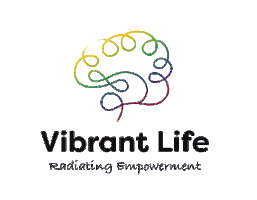What is the Rewind Technique?
Blog Author:
Vibrant Life
Publish Date:
15 April 2024
Compared to the long history of many psychological therapies, the Rewind Technique is a relatively new development that has already sparked great attention due to its extremely promising results in the treatment of Post-Traumatic Stress Disorder (PTSD) and other trauma-related symptoms. This technique helps people to process trauma by recoding how their memories are stored, without having to talk through their experiences aloud. This blog article explores a few of the Rewind Technique research findings: its efficacy and potential as a therapeutic tool.
- One of the key studies from the UK Human Givens Institute was with a moderate amount of subjects—30 individuals. The following results occurred:
- 40% of the clients rated the Rewind Technique ‘Very Successful,’ underlining the potential of the Rewind Technique to bring substantial change in the well-being of traumatized individuals.
- 53% rated the treatment successful.
- The final 7% considered the intervention to be acceptable. So although the technique is not transformative for all, it still carries value.
- Most significantly, the technique received no low-rated, or failed ratings from any participants – a critical consideration as psychological interventions more usually elicit diverse responses. It was also demonstrated that the scores of self-reported well-being increased from an average of 12 out of 50 before treatment to 32.2 three to six months after the treatment with the Rewind Technique. This transcribes into a remarkable 167.4% improvement and testifies to the immense potential of the technique to pave the way for serious psychological recuperation.
Furthermore, a four-year study from NOVA (part of the Barnardo’s charity) carried out with 47 individuals showed similarly impressive results. Prior to treatment over 50% of participants met the criteria for PTSD. After treatment, none of them did. There was also a significant reduction in all of the sub systems associated with PTSD. Remarkably, for five categories of symptoms, zero incidences were reported following treatment. This shows that the rewind technique facilitated a comprehensive recovery for many individuals suffering from PTSD (Human Givens Journal 2007, Volume 14, No 4).
Through the application of this technique, trauma can be reprocessed so that the recall of a traumatic incident does not trigger a trauma response in the individual’s nervous system. This gives relief without the necessity for repeatedly returning to the actual recalling of such experiences, therefore respecting the boundaries that the client feels are important. The technique engages the natural, innate capacities of the brain to process, integrate, and move on from arousing memories.
The current evidence is promising with further research into the Rewind Technique investigating larger sample sizes and more diverse populations to fully appreciate the applicability and effectiveness of the technique in different trauma contexts. Additionally, long-term follow-up studies are assessing the sustained impact of the treatment over time. So far, all the evidence suggests the Rewind Technique provides a valuable adjunct for individuals experiencing PTSD and other trauma-related disorders, who may struggle with the risk of being retraumatised through the retelling of events that is required in conventional talking therapy models.
